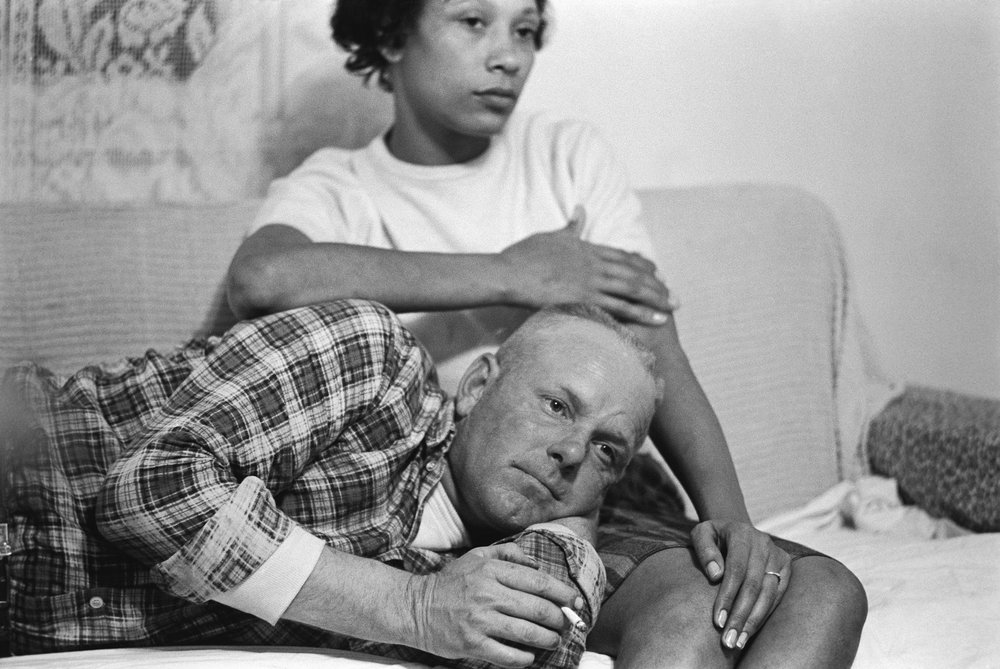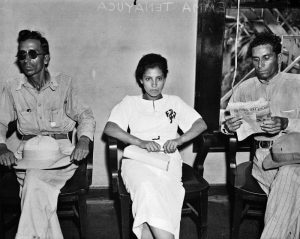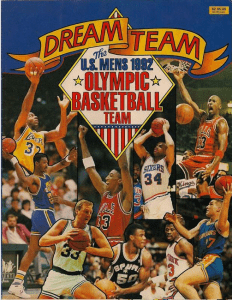“Not a day goes by that I don’t think of Richard and our love, our right to marry, and how much it meant to me to have that freedom to marry the person precious to me, even if others thought he was the ‘wrong kind of person’ for me to marry. I believe all Americans, no matter their race, no matter their sex, no matter their sexual orientation, should have that same freedom to marry. Government has no business imposing some people’s religious beliefs over others. Especially if it denies people’s civil rights. I am still not a political person, but I am proud that Richard’s and my name is on a court case that can help reinforce the love, the commitment, the fairness, and the family that so many people, black or white, young or old, gay or straight seek in life. I support the freedom to marry for all. That’s what Loving, and loving, are all about.” – Mildred Loving.1
On June 2, 1958, two childhood sweethearts, residents of Virginia, Mildred Jeter, an 18 year old, half African American and Cherokee woman, and Richard Loving, a 24 year old white man, were married in the District of Columbia, where it is legal for any man and women to marry regardless of their skin color. However, the District of Columbia was one of the few places where interracial marriages were legal. The District of Columbia along with other states believed a person could marry anyone they wanted regardless of the color of their skin. Shortly after their wedding, they returned to their home in Virginia. This was July 1958 16 and the State of Virginia did not recognize marriage between interracial couples which led to their arrest in the middle of the night in their home. “The Sheriff barged into the house, walked into their bedroom in the middle of the night, with no permission and demanded to know why they were together. Mr Loving worried of such a possibility told them his marriage license was in the drawer of the nightstand. But the sheriff arrested them anyway and charged them with violating that state’s anti-miscegenation laws prohibiting inter-racial marriages.” 2 They were arrested for violating the States Racial Integrity Act of 1924. The act made it illegal for a white person to marry anyone other than a white person, and were not able to marry unless they could prove the man and women were of pure white blood. If anyone violated this act it could result to 1 to 5 years in prison. In court, the Lovings both pleaded guilty and were sentenced to 1 year in prison. When they went to the Virginia Supreme Court Judge Leon M. Bazile found them guilty and suspended their one year sentence “On the condition that the couple leave the state and not return to Virginia together for 25 years.” 3

At that point there was nothing the Lovings could do anymore but leave. They left everything they had, including friends and family and tried to make a life for themselves in Washington DC. They would at times drives back to Virginia to see family and were extremely cautious to not be seen together. They were never together in Virginia unless they were inside the house where no one could see them. Some days Mildred would stay in Virginia and Richard would leave and on some they did the opposite. It was a tiring journey and Mildred could not take it anymore. Washington was not the ideal place where she wanted to raise her kids or live the rest of her life. She yearned for their life was back home in Virginia. During this time the Civil Rights Movement was rising and it inspired Mildred to take a huge step. In 1964, Mildred wrote to Attorney General Robert F. Kennedy hoping he could help. Kennedy then told her to contact the American Civil Liberties Union (ACLU). Bernard S. Cohen and Philip J. Hirschkop, ACLU lawyers, were more than eager to take up the case.4
Cohen and Hirschkop decided to take the case to the District Court of Virginia. It took a whole year for the suit to go through. However nothing changed. Judge Bazile’s argument was “Almighty God created the races white, black, yellow, Malay and red, and he placed them on separate continents. And but for the interference with his arrangement there would be no cause for such marriages. The fact that he separated the races shows that he did not intend for the races to mix.” 5 His prejudiced response gave them the grounds they needed to appeal to the Virginia Supreme Court of Appeals, however Judge Bazile’s decisions was upheld. It was the time every lawyer dreams of, for them to take the next big step: the Supreme Court. Finally, on April 10, 1967, the case came before the Supreme Court. This was the first time, the Supreme Court had to decide about interracial marriage bans. Neither one of the attorneys had experience in federal courts. Hirschknop was only two years out of law school and Bernard who had been out of law school for over three years, still lacked real experience in the Supreme Court. One of the biggest civil rights cases in the United States was being argued by two lawyers who lacked experience drastically lowering their chance of winning. Their argument was that Virginia’s law violates both the due process clause of the 14th amendment and the Equal Protection Clause. “The clear and central purpose of the Fourteenth Amendment is to eliminate all official state sources of invidious racial discrimination in the states.” 6 The lawyers used their evidence and knowledge to express how civil rights are part of any person’s constitutional and fundamental human right for pursuit of happiness, no matter the color their skin. The state made its argument based on “equal application theory”. They argued since both received the same punishment, they were not discriminated based upon their race, i.e. there was nothing constitutionally wrong with the court’s decision.

Neither Mildred nor Richard Loving appeared in court. However Richard sent a letter to the justices “Tell the Court I love my wife and it is just not fair that I cannot live with her in Virginia.”7 The love of the Loving was strong and the United States Supreme Court Justices granted it constitutional protection it deserve equally under the law. On June 6 1967, the Court made its decision. Their unanimous decision ruled in favor of the Loving family. Bernard S. Cohen and Philip J. Hirschkop, won the case for the Lovings and proved the State of Virginia wrong. Loving v. Virginia 1967 forced 16 US states to strike down their anti-miscegenation laws.8. Chief Justice Warren delivered the opinion of the court. He stated “There is patently no legitimate overriding purpose independent of invidious racial discrimination which justifies this classification. The fact that Virginia prohibits only interracial marriages involving white persons demonstrates that the racial classifications must stand on their own justification, as measures designed to maintain White Supremacy.” 9

Nine years after the Lovings’ arrest, Mildred and Richard could finally go home in peace. Richard built a house for his wife and 3 children in Virginia where they live together having overturned unjust laws. The battle was finally over, couples of every race could intermarry in any state they chose. The Lovings got to live and raise their children in their home state. Sadly, this beautiful family’s happiness was cut short when a drunk driver ended the life of Richard Loving on June 29, 1975. Mildred lost sight in her right eye in the same accident. She continued to lived in the house Richard built for her and their children. She never remarried. She could never love anyone as much as she loved Richard. She did not leave her house as much after his death and remained pretty quiet until recent years. She became an even bigger inspiration to many. She was interviewed and asked about her opinion on same sex marriage. She became a huge advocate for same-sex marriage. From her own experience, she knew that the government has no right to tell anyone who they can and cannot marry. Her story helped the landmark 2015 same sex marriage case that made it legal for adult to marry no matter their gender. Last year was the 50th anniversary of the Loving case, and on June 12, we celebrate the unofficial day called “Loving Day” to remember the Loving case and the end of all bans on interracial marriages. Their love is eternal and their case will be remembered as the case that showed hope and love can overcome injustice and discrimination. “Thats what Loving and loving are all about.” 10
- Stolberg, Sheryl G. “50 Years After Loving v. Virginia.” The New York Times. June 11, 2017. Accessed April 28, 2018. https://www.nytimes.com/2017/06/11/us/50-years-after-loving-v-virginia.html. ↵
- Halman, RW. “Miscegenation: Loving v. Virginia.” Spirit of a Liberal (blog). Accessed April 28, 2018. http://www.theliberalspirit.com/miscegenation-loving-v-virginia/. ↵
- Roberts, Dorothy E. “Loving v. Virginia as a Civil Rights Decision.” Review of Loving v. Virginia Supreme Court Case. 2014, 175-209. Accessed April 28, 2018, http://www.nylslawreview.com/wp-content/uploads/sites/16/2015/02/Volume-59-1.Roberts.pdf. ↵
- Holland, Brynn. “Mildred and Richard: The Love Story That Changed America.” History Stories. February 17, 2017. Accessed April 28, 2018. Mildred and Richard: The Love Story that Changed America. ↵
- Holland, Brynn. “Mildred and Richard: The Love Story That Changed America.” History Stories. February 17, 2017. Accessed April 28, 2018. Mildred and Richard: The Love Story that Changed America. ↵
- Loving v. Virginia, 395 (June 12, 1967). ↵
- Holland, Brynn. “Mildred and Richard: The Love Story That Changed America.” History Stories. February 17, 2017. Accessed April 28, 2018. Mildred and Richard: The Love Story that Changed America. ↵
- Deniz, Gevrek. “Interracial Marriage, Migration and Loving.” The Review Of Black Political Economyno. 1 (2014): 25. RePEc, EBSCOhost (accessed March 27, 2018) ↵
- Loving v. Virginia, 395 (June 12, 1967). ↵
- Stolberg, Sheryl G. “50 Years After Loving v. Virginia.” The New York Times. June 11, 2017. Accessed April 28, 2018. https://www.nytimes.com/2017/06/11/us/50-years-after-loving-v-virginia.html. ↵



115 comments
Lynsey Mott
I think this case is truly amazing as well saddening. They spent almost 10 years of not being able to be together in their own state because of a act; States Racial Integrity Act 1927. Mildred is inspirational because she started all of this movement into effect because she wanted to live in her home state and start a family with Richard. The fact that they had two lawyers who had never had a case like this in the Supreme Court, is something else entirely, and the fact that they won the case for the Loving’s. The one part I cannot get over is that fact that the Loving’s life was finally going in the right direction and suddenly it was ripped away by a drunk driver. They had so many obstacles in their way and went through all of them, to be ended by someone who thought it was okay to drive drunk. I think their story is so inspirational and how Mildred keeps on fighting for love everywhere.
Victoria Rodriguez
Although I already knew of the Loving case, your article was so well written it was like I heard of it for the first time. I appreciated how you successfully incorporated Mildred Loving’s quote at the beginning and end. It was a strong way to begin and end the article. I was not surprised she advocated for same-sex marriage considering what her and her husband went through, but it was new information for me.
Aneesa Zubair
Like Max, I knew of the Loving case before but wasn’t aware of some of the incredible facts you mention in your article. I had no idea that Hirschknop and Bernard had never dealt with federal courts prior to this case – which makes the Supreme Court’s decision that much more incredible! I also didn’t know about Loving Day, and now I wish it was better known. I hope it gains awareness, as the case dealt with many issues that are relevant today.
Max Lerma
Thank you for this incredible article, Maria! I must confess that while I know of the case I did not know many of the salient details aside from the fact that it was about interracial marriage. It is remarkable to see just how prejudiced our own nation was at that time and the importance of knowing this history, no matter how unsavory it may be, so that we are not doomed to repeat it. We can all learn from your article far more than just how much racism ran rampant in that time, but we may also learn from the resilience and bravery of the Loving family and that love and family transcends all obstacles.
Gabriela Ochoa
This story has always been interesting to hear about. The Lovings went through a lot to be able to be together with a lot of trouble in the case against them they. Its amazing that they were arrested and sent away from the state of Virginia because they were an inter-racial couple. Its also inspiring to see them risk their lives to go back to Virginia to see their families and to risk their marriage. I’m glad that the supreme court decided to hear their case and eventually ruled in favor of them. They changed history with their case and made it so that people than and now could love someone without any problems dealing with their race.
Taylor Rech
Now, when people think of segregation in the United States, it feels like a distant nightmare of the past; however, when people read articles like this one, it reminds them that this racial discrimination was alive within the past century, a relatively short time from a historical perspective. This article truly sheds light on the injustices of segregation and the issues it caused. Lastly, I found it interesting that the author used the universally understood topic of love to get readers to understand the immorality of the hatred that is segregation.
Cynthia Rodriguez
I have read the Loving v. Virginia case and I think it is one of the most important Supreme Court cases. It is hard to believe that interracial marriages were once banned. People should be allowed to marry whoever they want. Marriage is intimate, not something political. I am glad you decided to write an article about it. Having read about this case before, I think you did it justice. I loved that you started off with a quote from Mildred Loving. You did a very good job of explaining the Lovings’ story. I especially liked that you emphasized their love for each other and I think the title is appropriate and fitting. I also liked that you brought in another important Supreme Court Case: Obergefell v. Hodges (2015). This case legalized same-sex marriage and I’m glad that you mentioned the Lovings’ role in helping that case. I noticed a couple of grammatical errors, but nothing major. You have a nice writing style and I enjoyed reading this piece.
Crystal Baeza
Love overcomes all! It’s such beautiful story for two different people with different race fight for their rights to love one another. It’s a tragedy their love story couldn’t be lived longer but the fact that Mildred still became an advocate for same sex marriage is amazing. She personally knew the struggles to be with the one she truly loved and fought for others rights as well. I love they even dedicated a date for the strong couple’s love and celebrate their Loving.
Madison Downing
When I was scrolling through articles to read and saw the title I was so excited to read this story, it brought some tears to my eyes. It was horrible to know that people used the Bible as a way to promote racism when that is not the teachings at all, no race was better than the other and no race should be kept apart. It was even worse to read how they were arrested in the middle of the night because of their love, but it was also just as empowering that they pleaded guilty on the fact they weren’t ashamed of it. Our nation has come a great way from how it used to be and it’s viewpoints, slowly we are becoming less divided and more spoken on matters people want to hide. This was a beautiful piece and you are such an amazing writer. Thank you so much for sharing their story I am truly glad I got to learn it.
Kacey Diaz
I think this story proves that love will overcome all obstacles. As long a you love someone and they love you back equally as much, then there shouldn’t be anyone telling you that you can’t marry this person especially if it’s based on qualities such as skin color. The people who arrested the couple and brought them to court judged the couple based on their own opinions and not the true love the Loving’s had for each other.